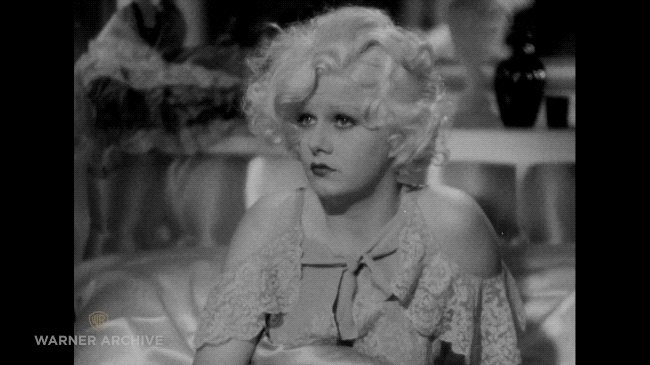You can well imagine Anthony P. Kirby’s chagrin.
In the 1938 screwball comedy, You Can’t Take It With You, Kirby (Edward Arnold) is a wealthy Wall Street tycoon, the type who buys federal regulators as easily as buying real estate. His latest deal involves munitions.
Kirby is a man who has no time or inclination for underlings. And everyone is an underling, except for Tony (James Stewart) his newly-minted Vice President and son.
Life for our tycoon is nothing but money and sunny skies. There is one dark cloud on the horizon, however: his son’s relationship with his working-class secretary, Alice (Jean Arthur). Kirby Sr. accepts this sort of thing in principle, provided it’s on a short-term basis and doesn’t result in marriage.
However, Tony and Alice suddenly become engaged, heralding the start of a fresh nightmare. Next comes the obligatory meeting with That Other Family, which Kirby Sr. calls the “slumming tour”.
Looking at it from an economic point of view, you can see Kirby Sr.’s disdain. Alice’s family, the Vanderhofs, live in a faded home of used-up wealth. And a lot of people live here, including the harmonica-playing grandfather (Lionel Barrymore), the artistic mother (Spring Byington) and a toy-making tenant (Donald Meek).
Also, there’s Alice’s sister (Ann Miller), who dances instead of walks, and their father (Samuel S. Hinds) who sets off fireworks in the basement.
Into this chaos the Kirby clan mistakenly and unexpectedly arrive one evening, their delicate souls traumatized by the all-out creative Goings On at Chez Vanderhof.
It’s an evening that will change Everything.

Alice (Jean Arthur, centre) fails to impress her future mother-in-law. Image: Nerdist
They say 1932-33 was the worst of the Depression. By early 1937, the economy had seen significant improvement, only to collapse again by the middle of that year. Manufacturing went down, unemployment went up, and Washington pointed the finger at business monopolies.
You Can’t Take It With You examines this economic environment through the two families: the wealthy, out-of-touch Kirbys vs. the non-materialistic Vanderhofs. Yet Vanderhof Sr. holds no ill will towards Kirby Sr., even though the tycoon is angling to buy the poor family’s house and kick them out.
Vanderhof Sr. is a laid-back man who genuinely wants people to live a fulfilling life. He quotes Abraham Lincoln: “With malice towards none, and charity to all.” This is a marvelous guiding principle, but the script uses it as an indictment against the Kirbys.
You see, a hallmark of the 1930’s screwball comedies, besides witty lines, is social commentary, and there are plenty o’ withering observations here.
This film isn’t saying all Wall Street types are crooked, just these Wall Street types. The Kirbys see nothing wrong with unscrupulous business practices, but heaven forbid a poor family should have artistic eccentricities.

Kirby (Edward Arnold, centre) is alarmed by a gorilla mask. Image: Wawa-Series
You Can’t Take It With You was directed by Frank Capra, whose films are sometimes referred to as “Capra-corn”. Some critics argue his films are too syrupy and sentimental.
Capra’s films are sentimental, but they also critique issues we recognize today: exploitation of the innocent, abuse of power, pursuit of justice, et cetera.
This film is a perfect example. Kirby Sr. wants to build a munitions monopoly; in other words, he wants to be the only one profiting from equipment specifically made to kill people.
That is twisted.
In our opinion, films dealing with such themes need to be sentimental. As long as there is corruption and oppression in our world, we need to see decent people fighting against and overcoming these miseries.
You Can’t Take It With You was adapted from the Pulitzer prize-winning Broadway play written by George S. Kaufman and Moss Hart. But Capra left his fingerprints all over this film adaptation, such as an errant “Home Sweet Home” sign and having Kirby Sr. repeatedly pushed into an uncomfortable chair.
If you’re not familiar with 1930s screwball comedies, we urge you to see this one. Even though it was made over 70 years ago, its themes resonate with us today.
Notes:
- You Can’t Take It With You was nominated for five Oscars, and won Best Picture and Best Director.
- This is part of THE ADDICTED TO SCREWBALL Blogathon hosted by Pfeiffer Films and Meg Movies.
You Can’t Take It With You: starring Jean Arthur, James Stewart, Lionel Barrymore. Directed by Frank Capra. Written by Robert Riskin. Columbia Pictures Corporation, 1938, B&W, 126 mins.












If I had to choose only one favourite Edward Arnold performance, it would be Kirby. He is outstanding in a rock solid ensemble. The actors have to be as good as they are or the whole thing would fall apart. The skill to handle the comedy and the emotion is unsurpassed in the golden era of screwball.
LikeLiked by 2 people
You’re absolutely right. This kind of film depends on perfectly-tuned performances of the actors. Like you, I adore Edward Arnold in this role. He’s credible as a high-powered exec, which makes him all the more hilarious.
LikeLike
Ah, heaven. One of my favourites. My mother was lucky enough to play Essie in a stage production in the late ’40s, early ’50s.
LikeLiked by 1 person
Your mother was Essie? What a fabulous role! Was she a dancer in addition to being an actress?
LikeLiked by 1 person
No. But as far as I remember, Essie’s not supposed to be a very good dancer!
LikeLiked by 1 person
It’s like casting Liza Minnelli in Cabaret (though I love the film). Sally Bowles doesn’t really have much talent. That’s dramatic licence for you. If you cast Ann Miller, you’re going against the original play.
LikeLiked by 1 person
Ah yes, that’s true!
LikeLiked by 1 person
Such an excellent film, and a great review! I am glad it won Best Picture. As well, you are so right about Capra films – they are sentimental but they always have important social commentary. I feel more fulfilled and in tune with the human condition after watching Capra films.
LikeLiked by 1 person
I’m glad it won Best Picture, too. It has a timeless message about placing too much importance on money. And I know what you mean about feeling more “in tune” with the human condition after watching one of Frank Capra’s films. 🙂
LikeLiked by 1 person
Okay, you’ve convinced me!
LikeLiked by 2 people
Haha! I’m glad I did! 🙂
LikeLike
“You can’t take it with you” is one of those films that I’ve seen bits and pieces of but never in its entirety. I am hopeful that I will finally get to watch the complete film, but given the lack of classic screwball comedies on DVD/Blu-ray, I won’t hold my breath!
One of the things I do love about these late 30s, 40s Hollywood films is the “maturity” of the leading ladies. I mean Jean Arthur was 38 at the time of “You can’t take it with you” and still playing the romantic lead. How times have changed and not for the better.
Thanks again for your interest in the blogathon.
LikeLiked by 1 person
Yes, Jean Arthur does not look 38 in this film – she looks utterly fabulous, like she always does.
I hope you get the chance to see this one. I suspect you might like it.
And thanks for hosting this blogathon. I’ll be by later to check out the entries later. 🙂
LikeLike
Really interesting analysis!! I’d love to watch it. I like how the historical, social and economical background, seem to have influenced the film. Love those old screwball comedies. There is so much more, than just mere comedy.
LikeLiked by 1 person
I agree. Those comedies from the 1930s were smart and witty, and weren’t just mindless entertainment. I hope you get through chance to see this one. I truly think you’ll be charmed by it.
LikeLiked by 1 person
Reblogged this on WILDsound Writing and Film Festival Review.
LikeLiked by 1 person
Well-said. You’ve captured it so well. You know what I love about these writings of yours? They almost always give me another angle to look at the movie from. I love that! It makes them more interesting…
LikeLiked by 1 person
Aw, thanks! And thanks for your support. You’ve made my entire week. 🙂
LikeLiked by 1 person